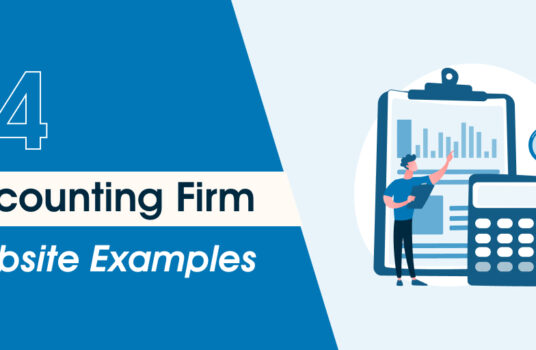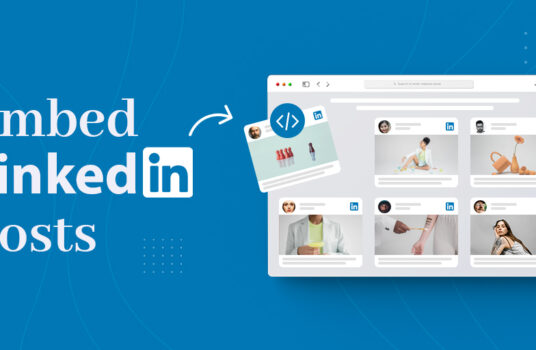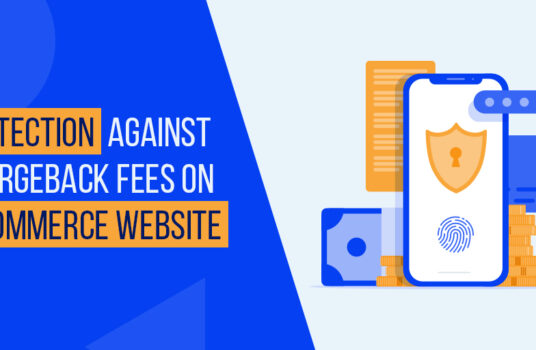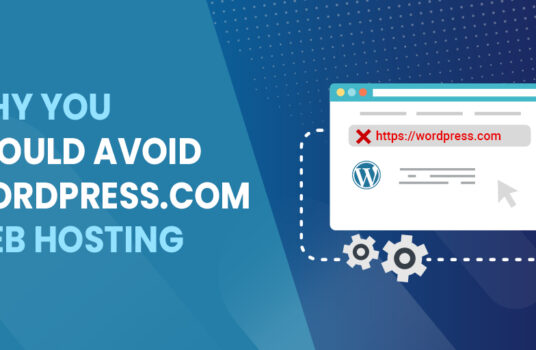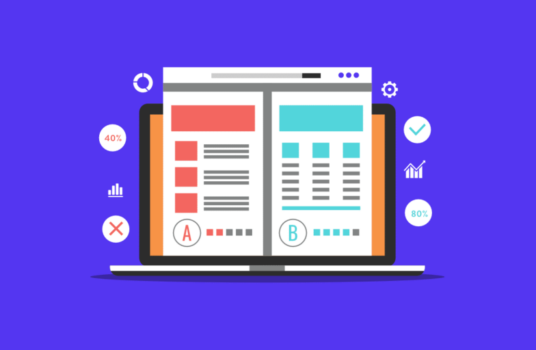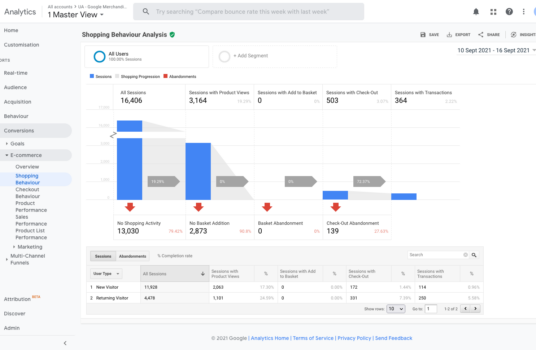The cost of developing a website can vary dramatically, ranging from just a few hundred dollars to vast five or even six-figure sums.
Navigating the world of website development pricing can seem daunting, but this guide is here to shed light on the topic.
In this guide, we’ll go through the following key information:
- The three core factors that influence web development costs.
- Our uniquely devised “6 Web Development Price Tiers” framework.
Whether you’re a budding entrepreneur, an established business, or just curious about the industry, this guide is tailored to provide clarity on what you can expect to invest in a website in 2023.
Web Development Cost: 3 Main Factors
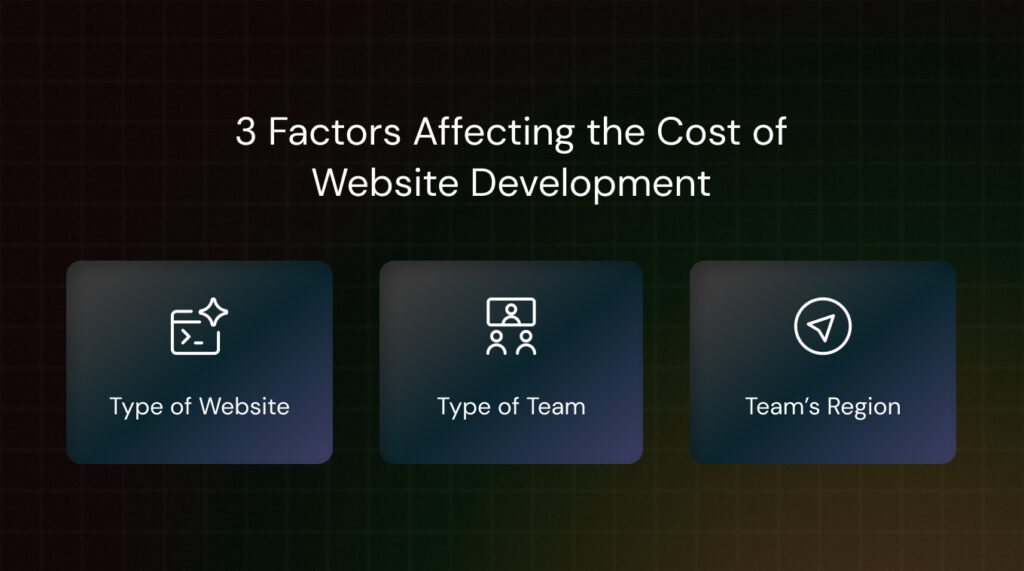
When exploring the cost of web development, it’s essential to pinpoint the primary factors that drive these prices. While numerous variables can come into play, we’ve identified three main determinants that have the most significant impact:
- Type of Website: Not all websites are created equal. A personal blog differs vastly from an e-commerce platform in terms of complexity, features, and design. As such, the nature and functionality of the website can dictate its cost.
- Location of Development Team: Geography plays an essential role in the pricing model. Developers based in North America might charge differently compared to those in Eastern Europe or Asia. This variance is often tied to living standards, local demand, and economies of scale in each region.
- Level of Expertise: The skills and experience of your chosen developer or agency are paramount. Novices may offer more competitive prices, but seasoned experts bring a wealth of knowledge, ensuring optimal results. This expertise often comes with a corresponding price tag.
In understanding these factors, you can gain a clear perspective on the web development cost landscape. It allows for more informed decisions, ensuring you get the best value for your investment.
How does Type of Website Impact the Development Cost
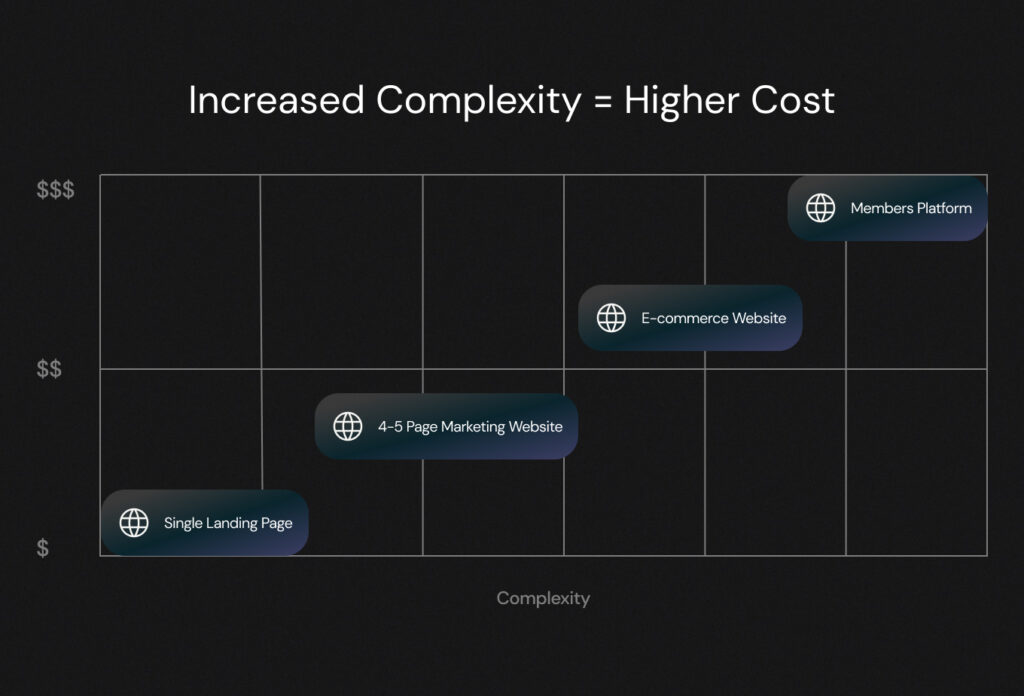
The cost of web development varies greatly depending on the specific type of website.
The primary reasons for these variations are differences in complexity and features in the website.
Here’s a breakdown that showcases the cost impact associated with different types of website:
- Personal Websites:
- Cost: Typically lower.
- Reason: They’re basic. Often, they use ready-made templates. Fewer pages equal less work.
- Single Landing Page:
- Cost: Typically lower.
- Reason: It’s a single page, focused on a specific topic or action. Minimal design and few functionalities mean less work.
- Blogs:
- Cost: Moderate.
- Reason: A content management system is needed. Platforms like WordPress make it more accessible.
- E-Commerce Sites:
- Cost: Higher.
- Reason: Secure payment gateways are a must. Product listings and user functionalities add complexity.
- Business Websites:
- Cost: Moderate to high.
- Reason: They aim for a professional appearance. Features like contact forms or live chat are common.
- Forums and Community Sites:
- Cost: High.
- Reason: They need user management. Real-time interactions also increase complexity.
- Educational or E-learning Platforms:
- Cost: Quite high.
- Reason: Features like quizzes, courses, and progress trackers are complex to implement.
- Marketplace Website:
- Cost: Very high.
- Reason: Involves multiple vendors, secure transactions, user reviews, and complex functionalities.
How does Location of Development Team Impact the Development Cost
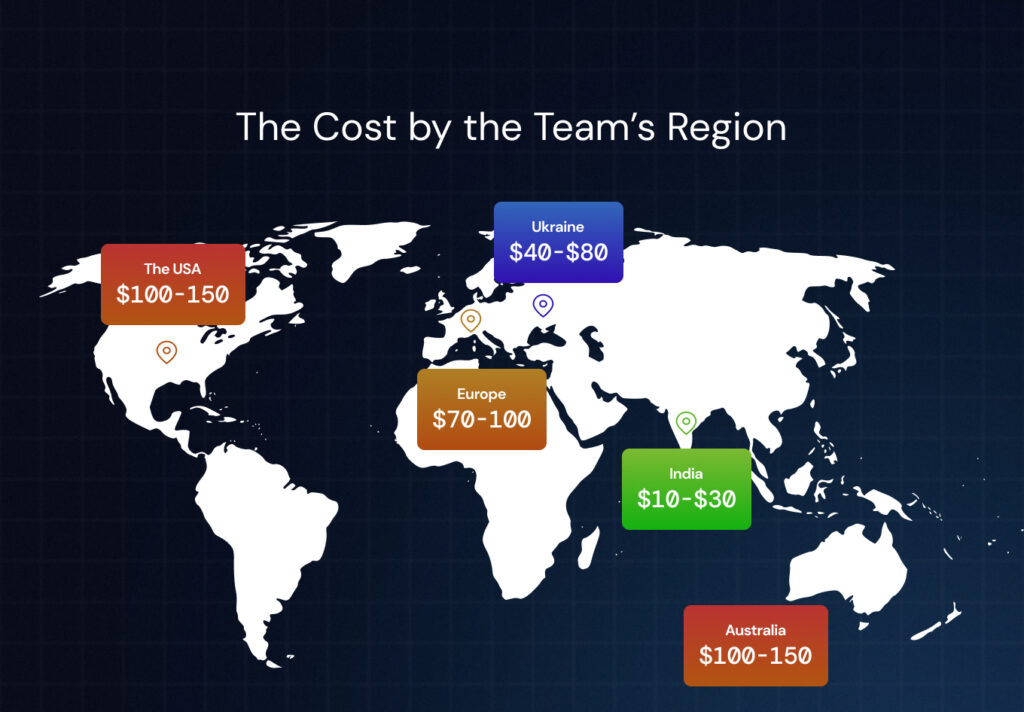
Web development labour costs can vary widely between countries.
A similar web project might come with a varying price tag, simply based on where the developer is based.
Additionally, diverse regions can present variations in communication proficiency and time zone disparities, potentially influencing project outcomes.
Below is an outline detailing how costs can fluctuate based on different geographical areas:
- Developing Countries (e.g., India, Philippines):
- Cost: Often lower.
- Hourly Rate: $10 – $30.
- Reason: Lower living costs mean lower hourly rates. But always check their portfolio for quality.
- Eastern Europe (e.g., Ukraine, Poland):
- Cost: Moderate.
- Hourly Rate: $25 – $50.
- Reason: Rising tech hubs. Competitive prices with quality work. Growing reputation in IT.
- Western Europe (e.g., UK, Germany):
- Cost: Higher.
- Hourly Rate: $50 – $100.
- Reason: Higher living standards. Established tech industries. Expect top-notch quality.
- North America (e.g., USA, Canada):
- Cost: Typically highest.
- Hourly Rate: $75 – $150+
- Reason: High living costs lead to higher hourly rates. But often, you’ll get innovative solutions and state-of-the-art tech.
- Australia:
- Cost: Also among the highest
- Hourly Rate: $70 – $130
- Reason: Similar to North America. Advanced tech scene but with corresponding prices.
Where your development team is located can greatly influence your project’s budget. While it’s tempting to go for cheaper options, it’s crucial to balance cost with quality and other factors.
How does Level of Expertise Impact the Development Cost

The graphic should cover the 4 rate tiers I outline below. Making it clear that the rates are assumed for North America]
The expertise of a developer plays a major role in the cost equation.
Just like in any profession, more experienced practitioners often charge more.
The hourly rate estimates provided below are specifically for North American-based developers. These prices will vary significantly depending on the developer’s location.
- Beginner or Junior Developer:
- Hourly Rate: $10 – $30.
- Reason: They’re just starting out. While affordable, they may need more guidance and time.
- Intermediate Developer:
- Hourly Rate: $30 – $70.
- Reason: They have a few projects under their belt. They bring a mix of value and experience.
- Senior Developer:
- Hourly Rate: $70 – $150+.
- Reason: Years of experience with diverse projects. They can handle complexities and provide innovative solutions.
- Specialist or Niche Developer:
- Hourly Rate: $100 – $200+.
- Reason: They have expertise in a specific area, like e-commerce or high-end animation. This specialisation can command higher fees.
The more experienced the developer, the higher their rates tend to be. This often translates to a smoother project experience and a more polished final product. However, it’s essential to align the developer’s expertise with the project’s needs to ensure value for money.
Introducing the “6 Web Development Price Tiers” System
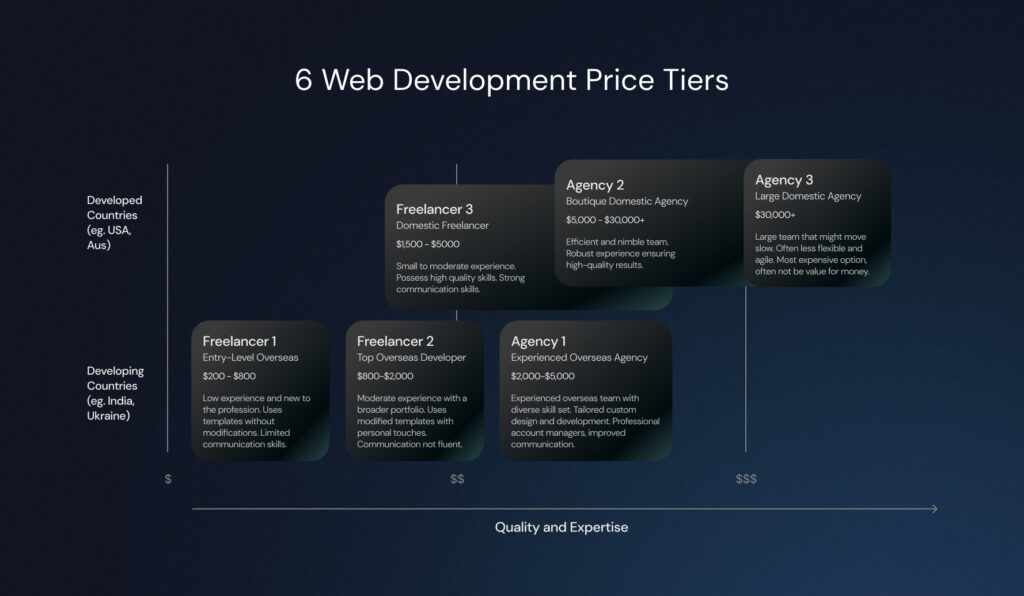
Navigating the vast landscape of web development pricing can be daunting.
Different factors like the type of website, where your development team is based, and their level of expertise can all significantly influence the overall cost.
To simplify this complexity and offer clarity, we’ve distilled our insights into a unique categorization: the “6 Web Development Price Tiers” system.
This system breaks down the intricacies of web development costs, offering a streamlined perspective on what you can expect for your investment.
As we delve into each tier, you’ll gain a comprehensive understanding of their distinct advantages, limitations, and typical price ranges, ensuring you make informed decisions tailored to your project’s needs.
In our breakdown of each tier, we’ve provided an example price for a simple business website project. This real-world pricing scenario offers a practical perspective, making it easier for you to gauge the investment required for your website project.
Inclusions for simple business website price estimate:
– 5 page website
– Flexible with design
– Contact Form
– Chat bot
1. Freelancer 1: Entry-Level Overseas Freelancer
- Price: $200-$800
- Where to Find: Platforms like UpWork, Fiverr.
- Description:
- Typically less experienced or new to the profession.
- Uses basic templates without many modifications.
- Communication may be limited due to non-native English proficiency.
- Swift delivery, though quality might vary.
- Turnaround: 2-3 days.
2. Freelancer 2: Experienced Overseas Freelancer
- Price: $800-$2,000
- Where to Find: UpWork, Fiverr.
- Description:
- Moderate experience with a broader portfolio.
- Uses modified templates with personal touches.
- Capable of clearer communication but may not be entirely fluent in English.
- Turnaround: 10-14 days.
3. Freelancer 3: Domestic & Seasoned Freelancer
- Price: $2,000-$5,000
- Where to Find: Platforms like UpWork or referrals from friends.
- Description:
- Considerable experience with a rich portfolio.
- Offers custom design and coding for a unique website.
- Native English speaker ensuring smoother communication.
- Turnaround: 14-21 days.
4. Agency 1: Overseas Expertise Agency
- Price: $2,000-$5,000
- Where to Find: UpWork or Job Boards
- Description:
- Comprises an experienced team with a diverse skill set.
- Provides custom templates tailored for business needs.
- Good command over English, suitable for most international businesses.
- Turnaround: 14-21 days.
5. Agency 2: Domestic Boutique Agency
- Price: $5,000 – $20,000+
- Where to Find: Google Search or Online Agency Directory
- Description:
- Efficient and nimble team dedicated to timely deliveries.
- Flexible in adapting to client needs and revisions.
- Robust experience ensuring high-quality results.
- Turnaround: 21-28 days.
Note: This is the tier where our services belong, striking a perfect balance between quality and cost.
6. Agency 3: Major Domestic Agency
- Price: $30,000+
- Where to Find: Google Search or Online Agency Directory
- Description:
- Larger team that might operate at a slower pace due to scale.
- Often adheres strictly to a set approach or methodology.
- Pricey, and might not always offer proportional value for money.
- Turnaround: 1-2 months.
Conclusion
In the ever-evolving digital landscape, understanding the cost dynamics of website development is crucial.
As we’ve illustrated, various factors influence the investment required for your website and there exist 6 price tiers that we’ve identified.
Armed with this knowledge, you can make well-informed decisions tailored to your needs and budget.
If you’re contemplating a web project or need expert insights specific to your vision, don’t hesitate. Reach out to us. Let our experienced team guide you to digital excellence.

